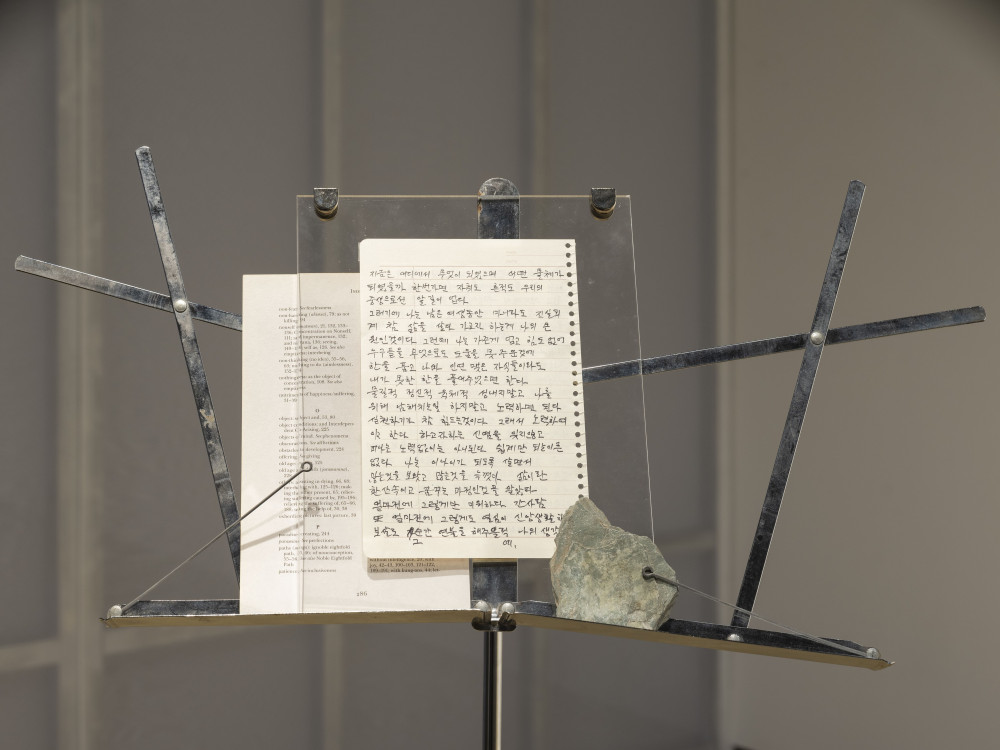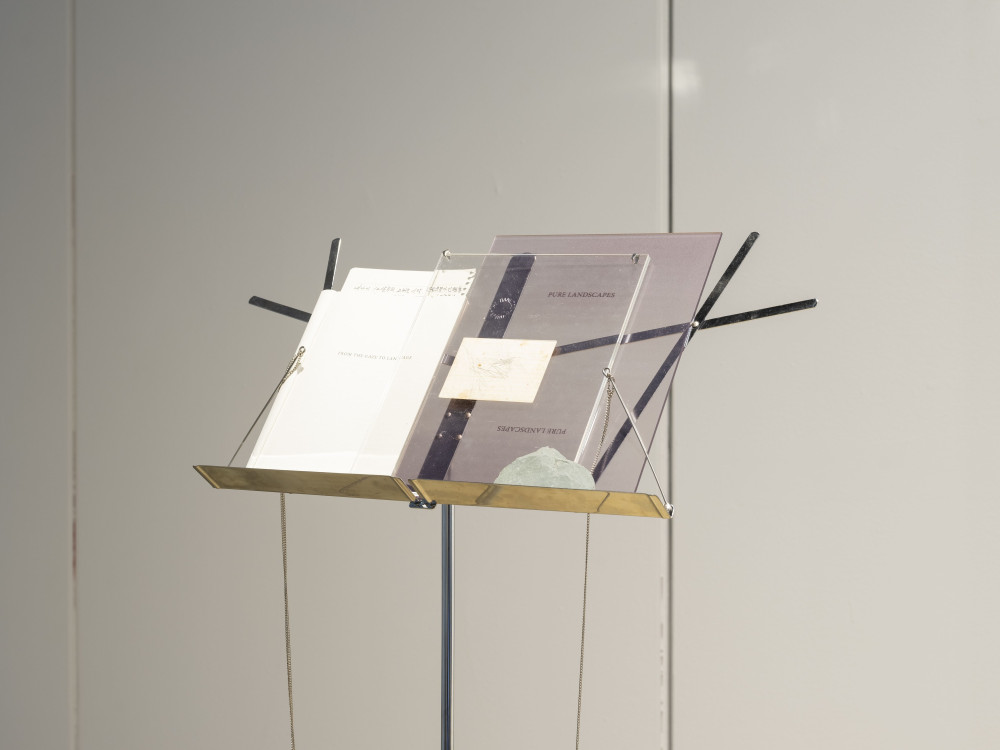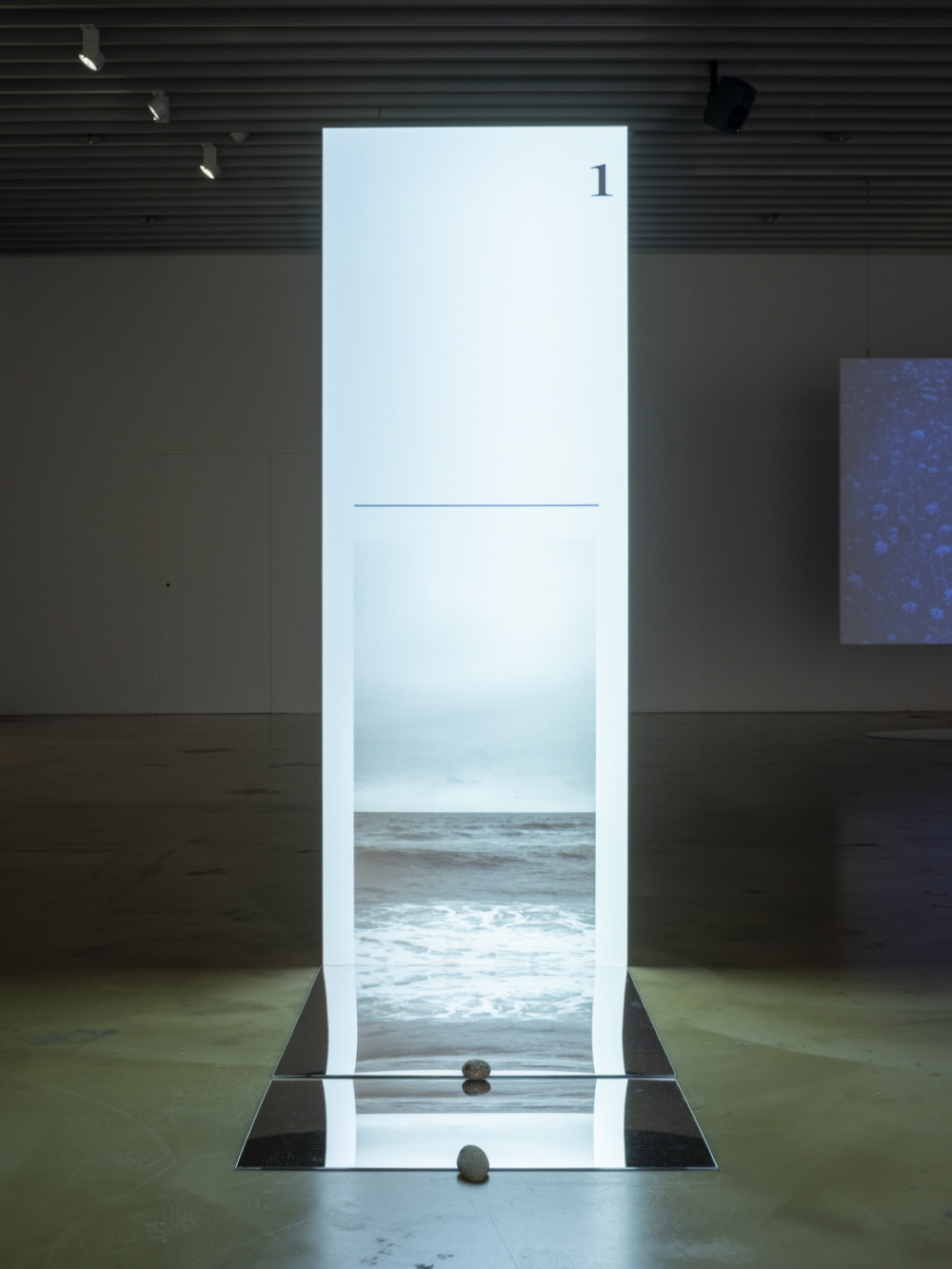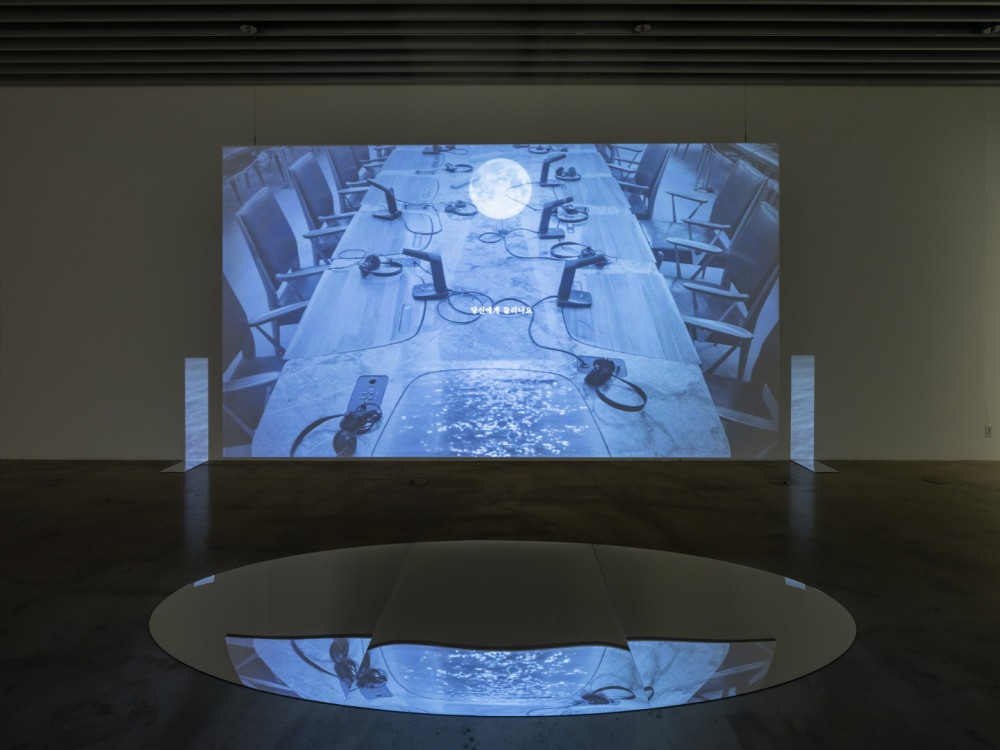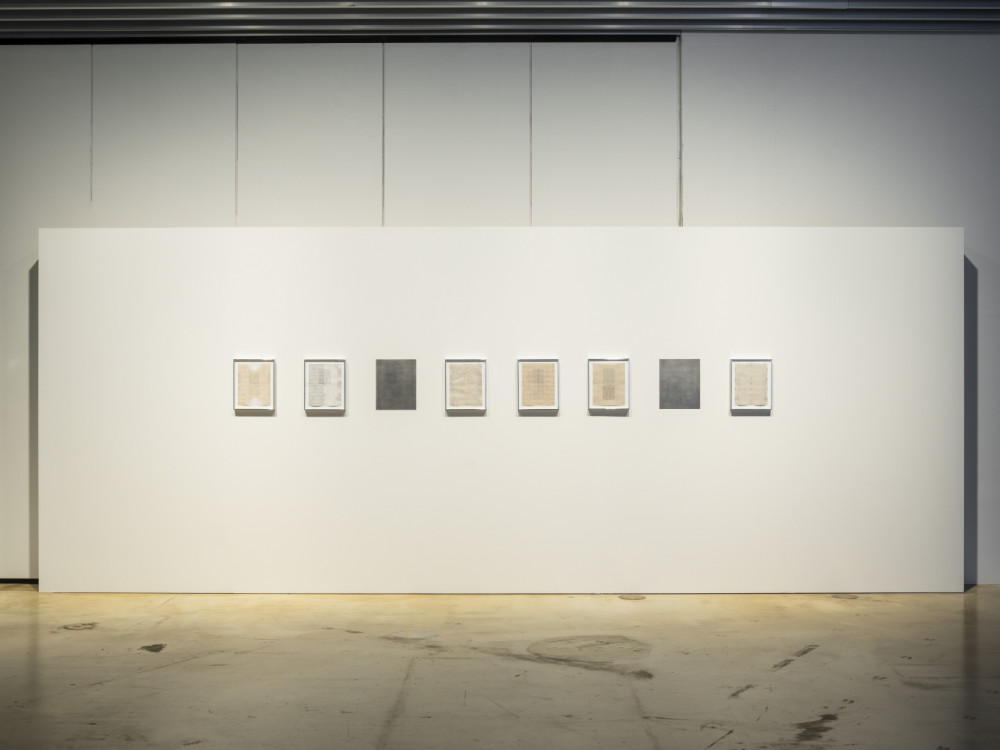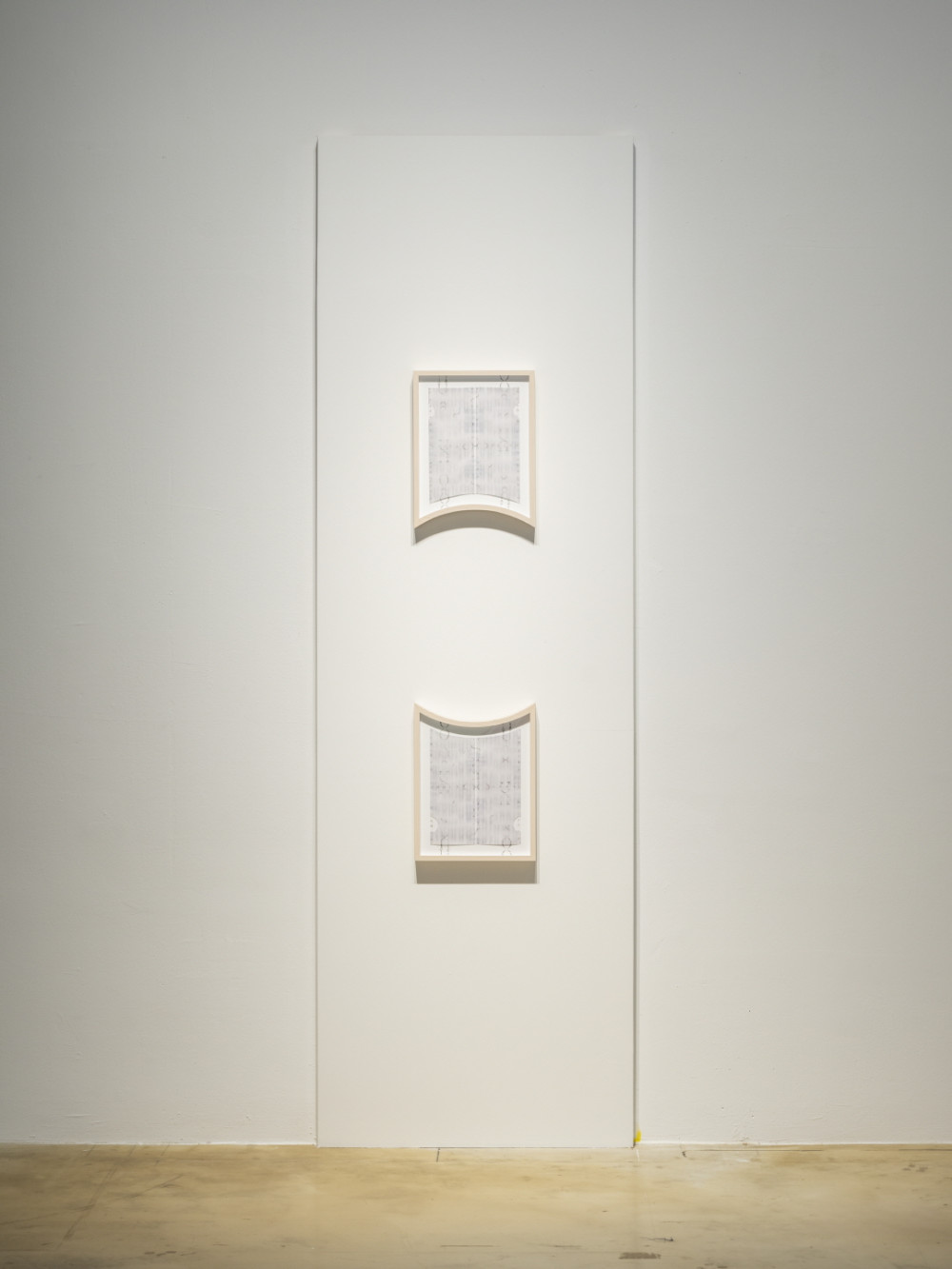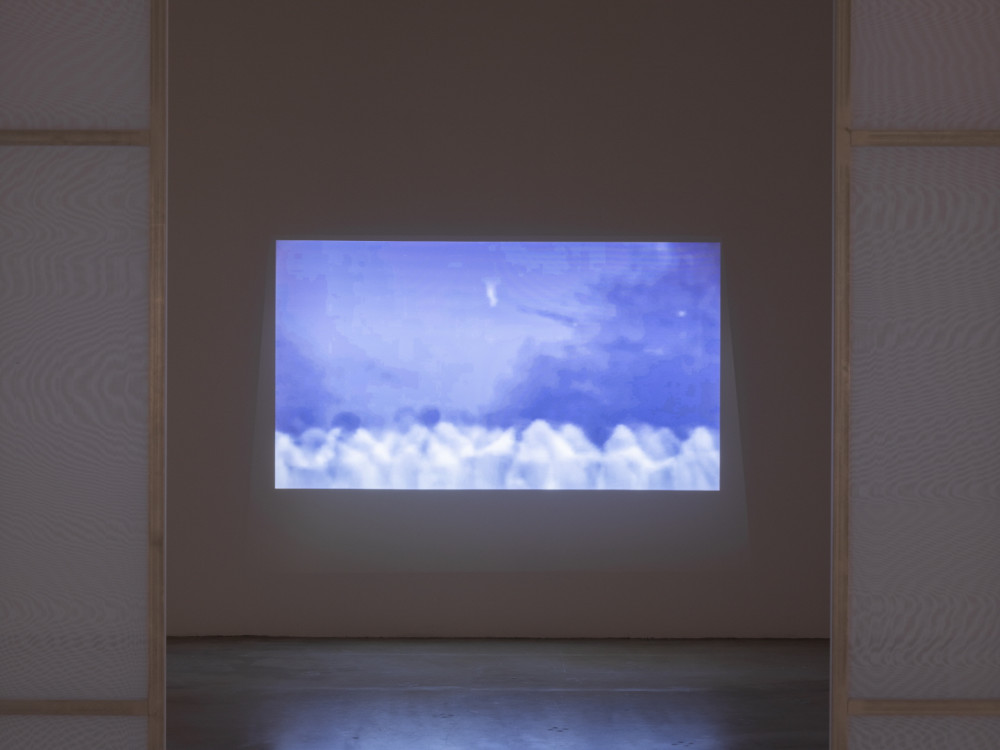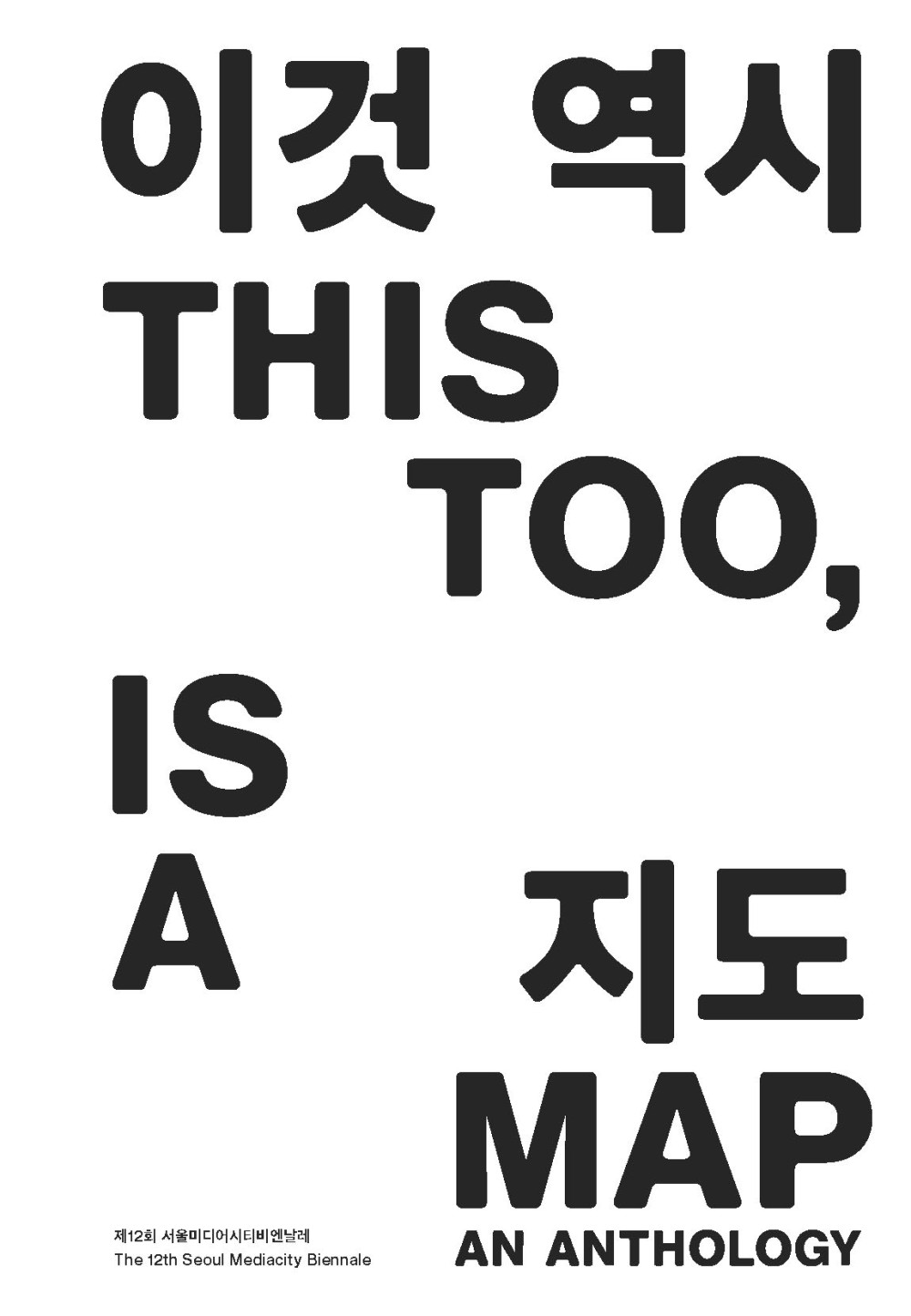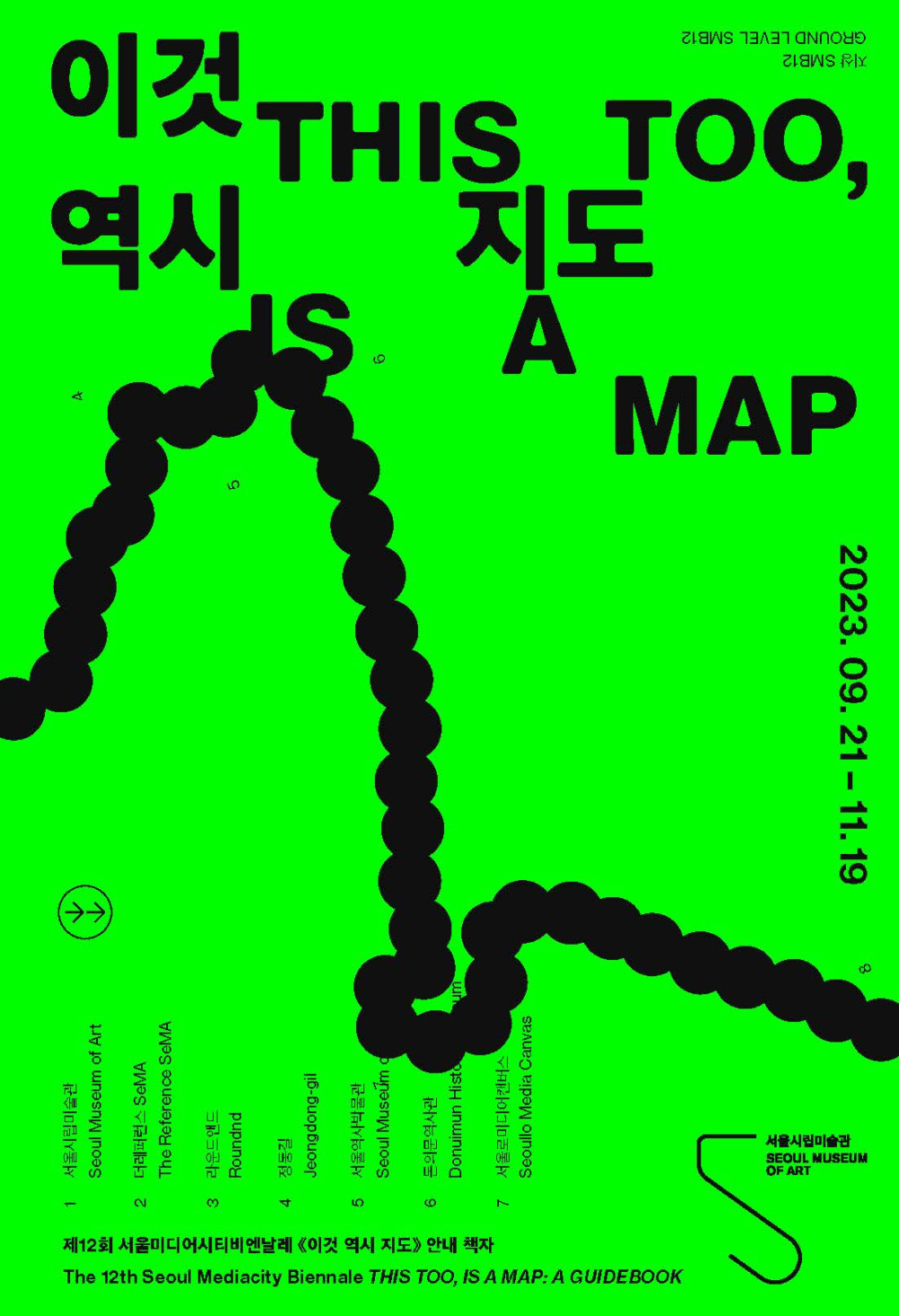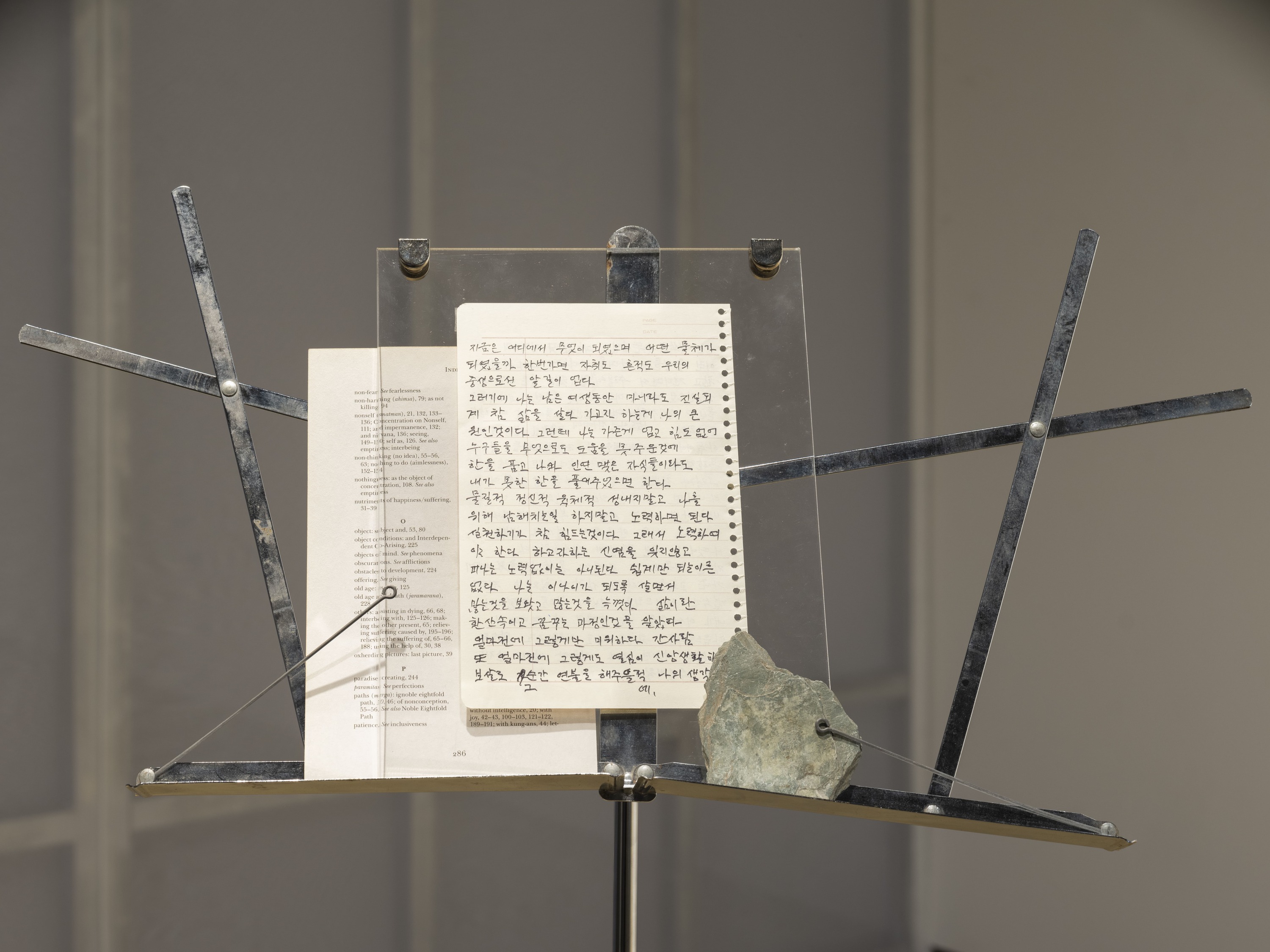
Several musical stands punctuate the exhibition space, each containing handwritten pages and the backs of photographs from Chun’s late grandmother, Lee Oak Sun. As a Korean folk dancer who later became a Buddhist nun, Lee was left out of her own family records as well as those of Korean folk art history due to the tumult of the Japanese colonial and postcolonial periods. As such, she serves as a spiritual influence in Chun’s approach to thinking about historiography and its gaps. The vintage music stands create assemblages of various book pages, Korean silk, images of clouds and smoke on mirror, dried lavender, and other offerings that Chun places in response to Lee’s writings. Speaking together across space and time, these sculptures question the structures of institutional and historical narratives, highlighting inherited lyrics, the forgotten, and the impermanent, as well as their afterlives.
